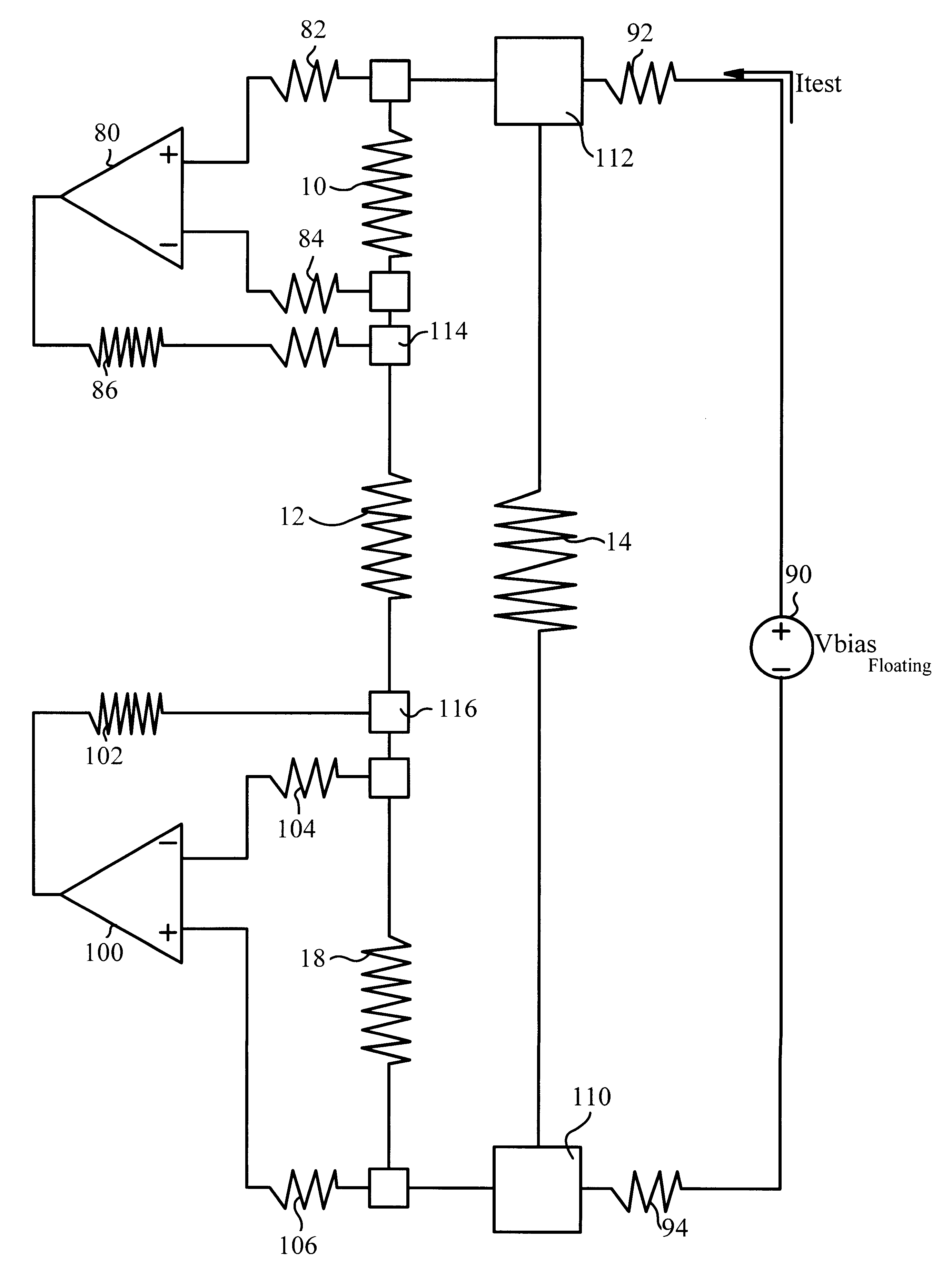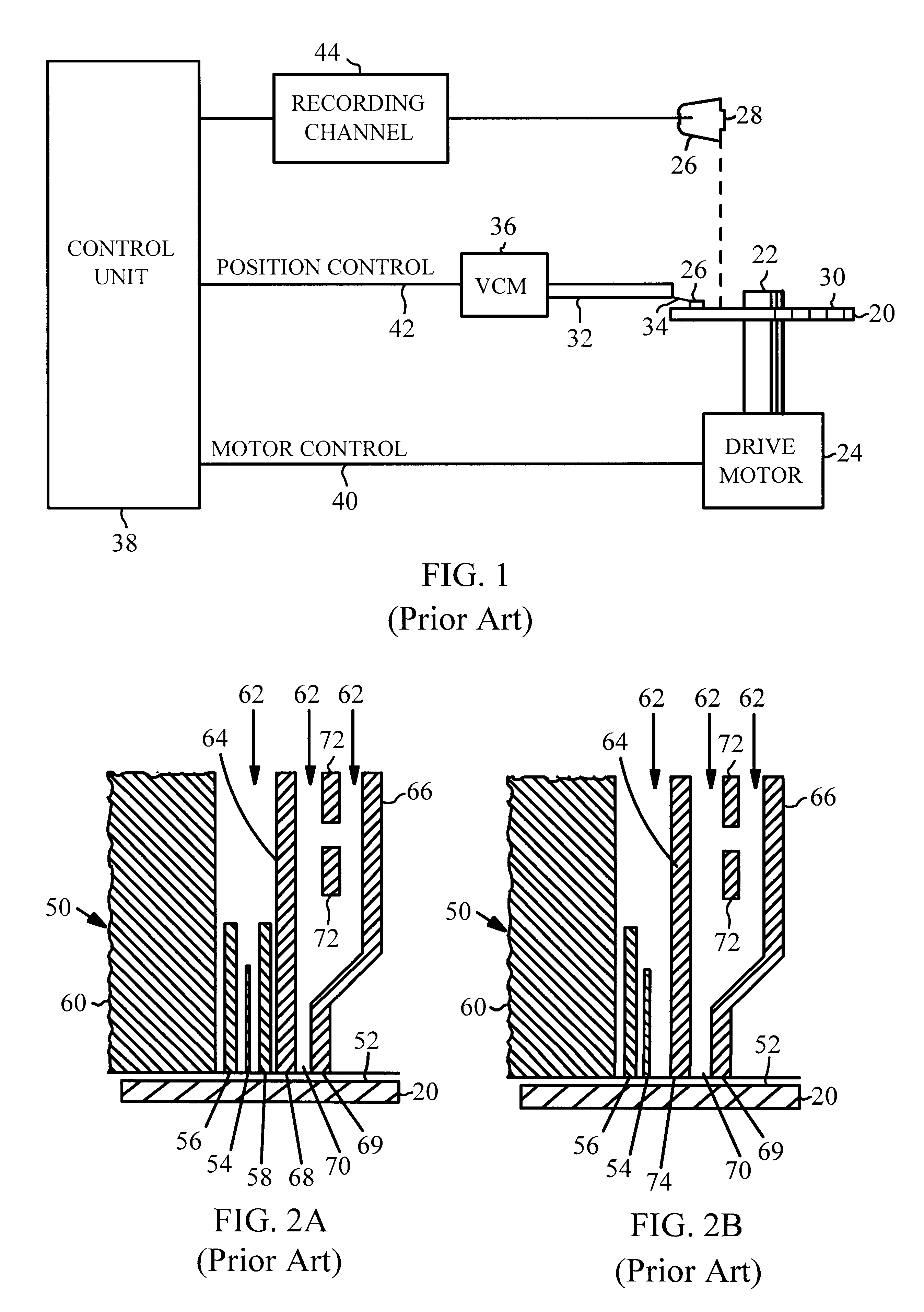Resistive shunt ESD and EOS protection for recording heads
a technology of resistive shunt and recording head, which is applied in the direction of data recording, magnetic recording, instruments, etc., can solve the problems of deterioration of the transducer in reading and writing data, esd and eos protection, and buildup of electrostatic charges
- Summary
- Abstract
- Description
- Claims
- Application Information
AI Technical Summary
Benefits of technology
Problems solved by technology
Method used
Image
Examples
Embodiment Construction
Although the invention is described as embodied in a magnetic disk storage system, the invention also applies to other magnetic recording systems and applications using a sensor to detect a magnetic field, such as magnetic tape recording systems for example. Referring to prior art FIG. 1, a magnetic disk storage system comprising at least one rotatable magnetic disk 20 is supported on a spindle 22 and rotated by a disk drive motor 24 with at least one slider 26 positioned on the disk 20. Each slider 26 supports one or more magnetic read / write transducers 28, typically referred to as read / write heads. The magnetic recording media on each disk is in the form of an annular pattern of concentric data tracks (not shown) on disk 20. As the disks rotate, the sliders 26 are moved radially in and out over the disk surface 30 so that the heads 28 may access different portions of the disk where desired data is recorded. Each slider 26 attaches to an actuator arm 32 by means of a suspension 34....
PUM
 Login to View More
Login to View More Abstract
Description
Claims
Application Information
 Login to View More
Login to View More - R&D
- Intellectual Property
- Life Sciences
- Materials
- Tech Scout
- Unparalleled Data Quality
- Higher Quality Content
- 60% Fewer Hallucinations
Browse by: Latest US Patents, China's latest patents, Technical Efficacy Thesaurus, Application Domain, Technology Topic, Popular Technical Reports.
© 2025 PatSnap. All rights reserved.Legal|Privacy policy|Modern Slavery Act Transparency Statement|Sitemap|About US| Contact US: help@patsnap.com



